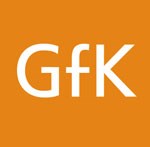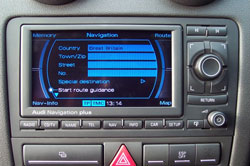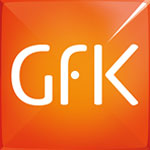
Top stories



At present, the most popular satellite navigation products are those that enable internet connection and display detailed graphics of streets, landscapes and places of interest. These are the recent findings of GfK Retail and Technology survey.
Overall figures for 2010 confirm a trend that has been evident in the in-car electronics segment for some time: consumers are increasingly interested in devices which can be connected with music storage systems and the internet, and provide live updates of the latest information. Consequently, the demand for starter devices, which do not offer these functions, has noticeably declined. Although technically advanced products have contributed to a more stable average price on the overall market, both demand and sales have fallen on the whole because the more expensive devices were not able to compensate for the major decline in the cheaper starter product segment.
Overall, the market for car radios in Germany is declining, with around 11% fewer unit sales in 2010 than in the prior year. The revenue generated per device decreased by 5% to €101*. However, the first two months of the current year give grounds for hope, as demand in January and February only dropped 4% year-on-year and, at €98, the average price almost matched that of 2010.
The car radio market is faced with a change in technology - listening to CDs in the car appears to have reached its demise. The trend has now shifted towards products which can play music directly from a USB stick or SD memory card. In addition, an increasing number of radios have direct connections for digital multimedia players and many mobile phones can also be linked via Bluetooth, providing access to online music while in the car and the ability to make hands-free calls. As a result, many of the car radios that have most recently come on the market do not have CD or DVD players, and only provide connections for USB devices, SD cards or portable media players. Although only 90 000 "mechaless" radios were sold in Germany in 2010, this is by far the segment with the highest growth rate. The share of the overall car radio market held by this relatively new niche increased from 3% in 2009 to 6% last year.

With regard to broadcast reception in the car, traditional FM radio could potentially be replaced, or at least supplemented, by DAB transmission and internet radio in the medium term. Both technologies offer better reception quality respectively a wider range of stations. However, volume sales are currently still very low.
In addition to car radios, the traditional in-car electronics market segment also includes amplifiers and speakers. These segments were rather less successful in 2010. Following extremely modest sales in 2009, sales once again declined dramatically for amplifiers and speakers in 2010, falling by 23% and 24% respectively. Average prices have remained relatively constant, and the future looks brighter for this segment, with the trend at a much higher level of -4% for amplifiers and -1% for speakers at the start of this year.
In the overall market for in-car multimedia, demand in the main category of portable satellite navigation devices fell by 10% at the start of 2011, which was significantly lower negative development than that recorded in the prior year (2010: -20% in comparison to 2009). Particularly positive results were generated in the niche for multimedia monitors that are permanent in-car fixtures. Special double DIN navigation devices recorded growth of 4%, which was primarily attributable to products that can be easily integrated with the dashboard and where the technical connections are tailored to the respective car manufacturer. One in three upgrade devices are now customised for specific makes of car. This new product category is experiencing a real boom at present, recording a sales increase of 58%. Consumers are willing to spend more on these high-end devices, with average expenditure of around €1060. Willingness to spend is clearly high for new products and recognisable brand value, particularly when upgrade devices are more attractively priced than the original equipment from car manufacturers, while offering the same or better technical functions.
A comparable development emerges at the high-end of the portable navigation devices (PND) segment. An increase of 70% was recorded for devices that provide up-to-date information such as traffic, flight and weather reports on the move or that have a Google search function. The share of "connected PNDs" in overall portable navigation devices sales therefore increased from 5% to 10%. Rising popularity is also evident for computer graphics navigation support providing photographic images of motorway junctions, sights of interests, landscapes and cities. As a result, screens are increasing in size, and growth is evident in the segment with 5 inch displays in particular. Navigation devices that recognise individual driving styles and take into account the latest information from other drivers when planning a route are also popular.
At present, a few areas in the in-car electronics market are experiencing booming growth, but this is not strong enough to compensate for declines in the traditional product segments. A change in this trend is highly dependent on manufacturers and their technical innovations, above all in enabling in-car internet access, so as to attract new consumers and encourage drivers with older devices to upgrade to more modern products.
With its retail panel based in more than 80 countries worldwide, GfK Retail and Technology regularly collects data on TV and video devices, portable audio products, camcorders, stereo and home cinema systems, in-car electronics and storage media. The above analysis is based on information of the market development for upgrades of car devices in Germany between January 2010 and February 2011.
*Exchange rate at time of publication: €1=R9.88.

The GfK Association was established in 1934 as a non-profit organization for the promotion of market research. Its membership consists of approximately 600 companies and individuals. The purpose of the Association is to develop innovative research methods in close cooperation with academic institutions, to promote the training and further education of market researchers, to observe the structures and developments in society, the economy and politics that play a key role in private consumption, and to research their effects on consumers. Survey results are made available to the membership. The GfK Association is a shareholder in GfK SE.
Go to: http://www.gfk.com